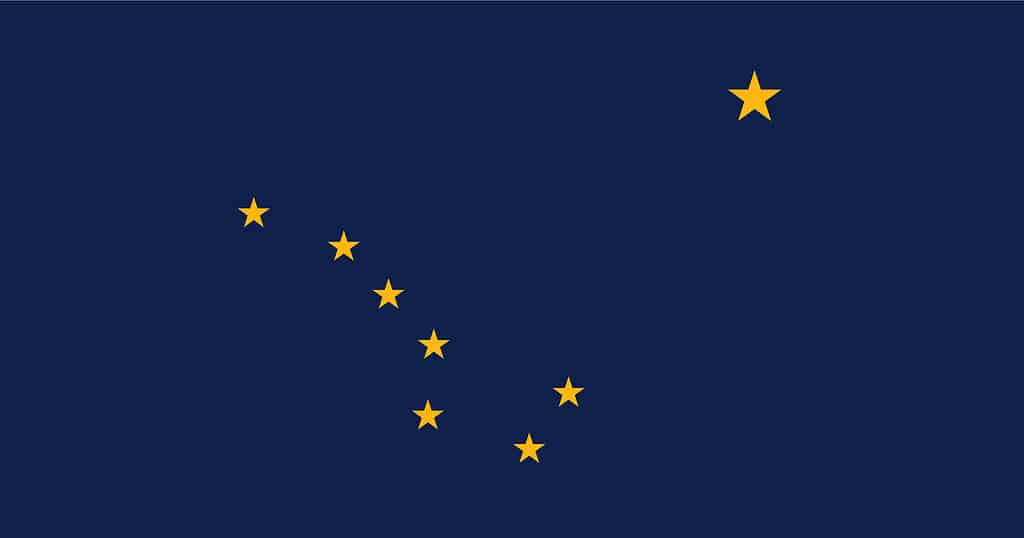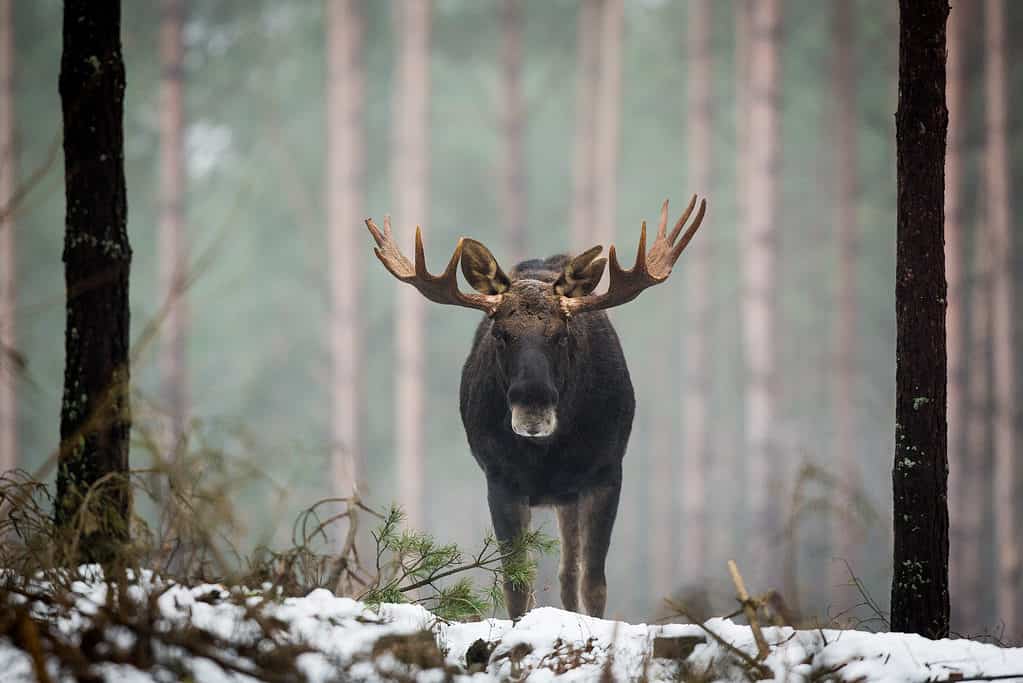Alaska was the 49th state admitted to the union on January 3, 1959. President Dwight Eisenhower signed the proclamation, making Alaska the largest state in the US by area, larger than the combined square miles of Texas, California, and Montana. Much of the area remains uncharted, unexplored, and very remote with low population density, making Alaska the perfect habitat for a wide, diverse range of wildlife while retaining its indigenous culture and heritage.
Charles E. Bunnell, the first president of the University of Alaska Fairbanks, is credited with the first mention of the phrase, “The Last Frontier”, referencing Alaska’s wild and untamed nature. In 1967, the state of Alaska officially adopted “The Last Frontier” as its state motto and one of several nicknames. More than 50 years later, the term is still just as relevant now as it was then.
Alaska’s Last Frontier Symbolism
The state flag of Alaska features a dark sky background with images of the Big Dipper and the North Star. The Big Dipper, also known as “Ursa Major” or the “Great Bear” constellation, signifies strength. The North Star, or “Polaris”, signifies Alaska’s northern location. The North Star, according to legislation, also signifies “the ever-constant star for the mariner, explorer, hunter, trapper, prospector, woodsman, and surveyor”. On the US-minted state quarters, both the grizzly bear and salmon are prominent. The bear is a symbol of strength, while the salmon represents food and life. Bear and salmon are abundant throughout the state, its national parks, and abundant water sources. Another familiar nickname conjures up strong imagery as well. Routinely referenced as the “Land of the Midnight Sun”, Alaska has an incredible annual period of 84 days with around-the-clock sunlight and no sunsets or darkness.

The state flag of Alaska features the Big Dipper and the North Star.
©iStock.com/Kamlesh Suthar
Alaska’s Wildlife Residents
With an abundance of untouched and unexplored wilderness in Alaska, all species of wildlife thrive in their natural playground. Kodiak and Grizzly bears, moose, caribou, whales, seals, and walruses are just a few of the impressive sights within Alaska’s borders. Wildlife is so diverse and abundant that as recently as 2010, Alaska was still adopting and designating official state animals. Some species that you would expect to be included, are not. For example, featured prominently in the state’s symbolism, the bear gives way to the moose as the official land mammal.

The moose is Alaska’s official state land mammal.
©Szczepan Klejbuk/Shutterstock.com
The Last Frontier and Subsistence Lifestyle
There are a few main cities in Alaska, but most of the state features remoteness and large distances between communities. Many residents, including the numerous indigenous peoples that call Alaska home, still rely on a subsistence lifestyle. A majority of the state is not accessible by road. In fact, the state is home to an above-average number of residents with pilot licenses. With an environment comprised of remote islands, dense forests, diverse coastlines, over three thousand rivers, and more than three million lakes, most people travel by boat or plane. While our world seems to be getting more connected, The Last Frontier is a reminder that there is still a place that offers large, open spaces of untouched and sometimes challenging wilderness complemented by natural beauty, exceptional air quality, and abundant wildlife.
The photo featured at the top of this post is © iStock.com/Kandfoto
Thank you for reading! Have some feedback for us? Contact the AZ Animals editorial team.







